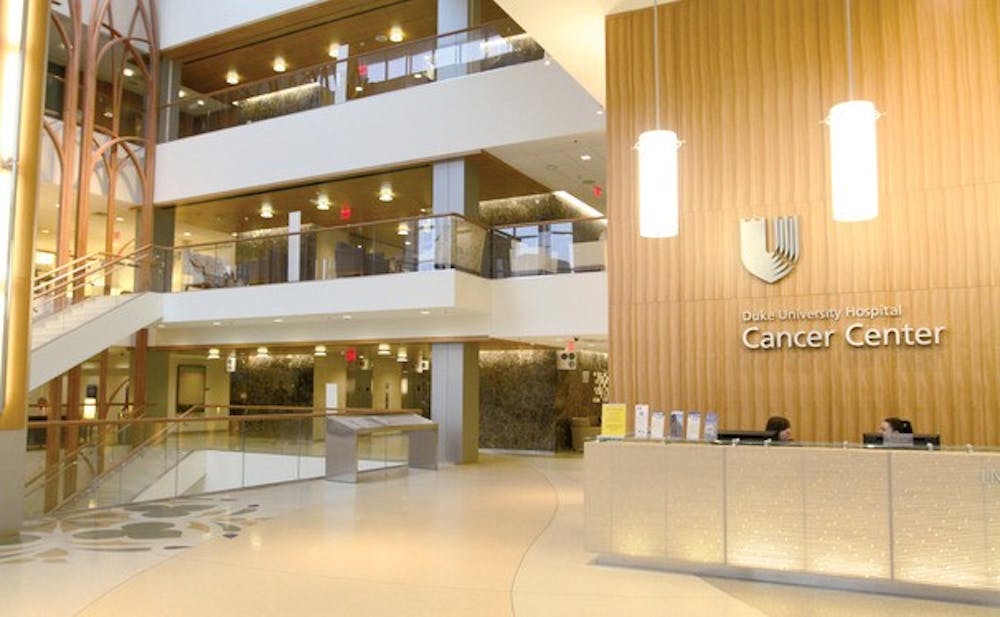Duke Medicine developed a revolutionary model for cancer care that reduces readmission rates among patients.
The model was presented by doctors at Duke Medicine at the 2014 Palliative Care in Oncology Symposium sponsored by the American Society of Clinical Oncology in Boston. The collaborative model—which facilitates communications between medical oncologists and palliative care physicians—has been employed by Duke cancer care doctors since 2011. In the past three years, the new model has shown promising statistics in reducing the rate of patients readmitted after being discharged and the numbers of patients transferred to Intensive Care.
“It is something that we are proud of, it’s something that’s unique and it’s something that’s made quite a bit of noise nationally,” said Dr. Richard Riedel, a medical oncologist at Duke Medicine who led the development of the model.
Back in 2007, Riedel and Dr. Anthony Galanos, palliative medicine specialist at Duke Medicine, recognized that many patients with a high symptom burden were being readmitted because their symptoms were not optimally controlled. Riedel and Galanos saw an opportunity to dramatically change the method they had been using—in which the palliative care doctor was disconnected from the patient’s condition.
“It’s not rocket science—it was finding out how we can improve things, and then going for it,” Galanos said.
To improve the old cancer care model, Riedel and Galanos created a co-rounding method. Upon arriving at the hospital, a patient’s symptoms are assessed, and—depending on these symptoms—he or she is assigned a medical oncologist or a palliative care specialist as his or her primary attendant. The medical oncologist and palliative care providers work together on the same team and floor, and meet three times daily to discuss all of the patients—which has allowed for cross talk between the two attendants, Riedel noted.
“I was the first to go up there with Dr. Riedel, and it just worked out beautifully,” Galanos said.
As a result of the implementation of the new care model, doctors are easily able to assess if the patient is getting the right care, and can easily switch the patient’s assigned attendant based on how he or she is feeling at any given time.
After the initial implementation, Riedel, Galanos and colleagues performed a before and after analysis in order to see if there were proven benefits of this new collaboration method. The analysis included data of about 1,500 patients—approximately half of whom were treated before the new method was executed—and half after.
The result of the analysis has led Duke to work on staffing an outpatient care model for palliative care coverage.
“The bottom line is that we were able to show that the implementation of the new model decreased readmission rates, shortened hospital stays and allowed attendants to better manage symptoms,” Riedel said.
At the conference in Boston, Duke’s new model was one of four chosen by the American Society of Clinical Oncology for a national press release. After their presentation at the symposium, both Riedel and Galanos have been contacted by colleagues from hospitals across the nation—such as Memorial Sloan Kettering Cancer Center and the University of California at Los Angeles Hospital.
Galanos noted that the team's next step is to publish their findings and export the model to the broader community in the cancer care field.
“Our satisfaction scores have gone way up for that unit of the hospital,” Galanos said. “As best I can tell it is a win-win proposition, and the patients and there families are being served better than before.”
Get The Chronicle straight to your inbox
Signup for our weekly newsletter. Cancel at any time.

